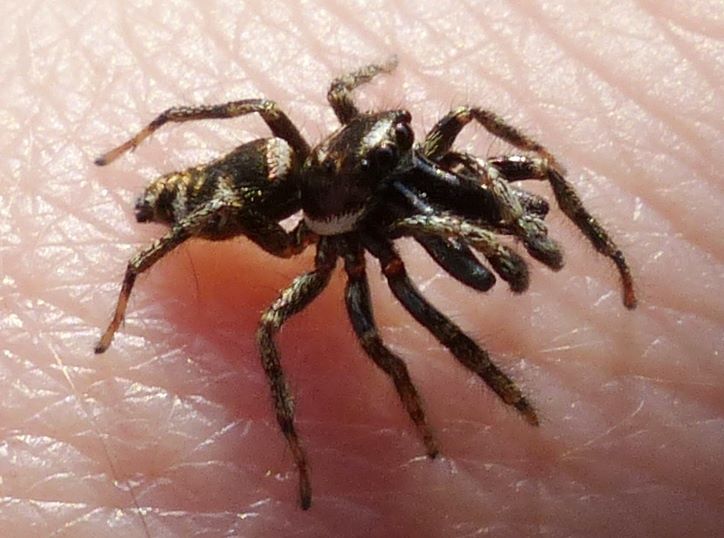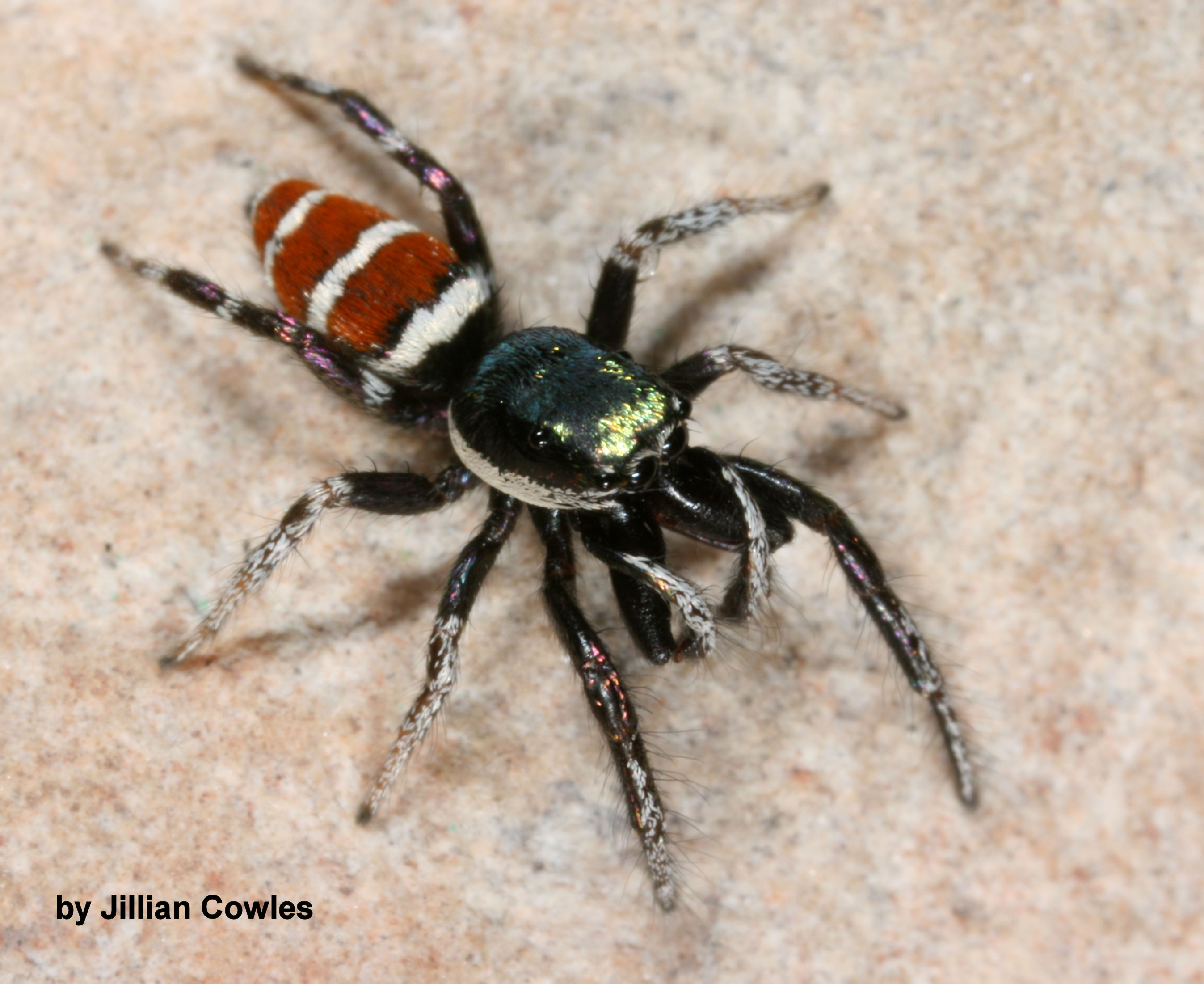Summary
Salticus (from Latin “saltus” – leap or jump ) is a genus of the family Salticidae (the jumping spiders). Salticus is the type genus for the family Salticidae.
Description
Coloration is determined by various scales (modified setae) covering a brown or black integument. Narrow scales (or hairs) may be black or red/rust colored, while broad scales are either iridescent (often magenta or green) or opaque granular white or yellow. Several common species have a dorsal pattern of black narrow scales and white granular scales arranged in transverse stripes, especially on the abdomen, from which the common name “zebra spiders” originates, e.g. Holarctic Salticus scenicus (Clerck, 1757). Some Salticus species in the Southwestern US and Mexico have red and white transverse stripes on the abdomen, e.g. Salticus palpalis (Banks, 1904). Some lack the “zebra” stripes completely and have both dorsal abdomen and cephalothorax covered with iridescent scales, e.g. Salticus peckhamae (Cockerell, 1897). Since the dorsal coloration does not seem to be involved in the male’s courtship display the coloration may have been selected for camouflage or mimicry. For example, there is a strong similarity between S. palpalis and Agapostemon sweat bees. Salticus species range in length from 3-7 mm. Males are smaller than females, but have elongated chelicerae and pedipalps.


Habits
Like most Salticidae, they prefer open, sunny habitats They are often found on vertical surfaces including man-made structures such as walls and fences or natural such as tree trunks. They are commonly found near water, where they feast on emergent aquatic gnats and other insects. One study recorded dipterans as 70% of prey items. Salticus species have been observed preying on insects several times their body size.
Distribution
This genus has at least one species recorded from every continent except Antarctica. One common species, S. scenicus, is a widely distributed Holarctic species associated with human habitations. S. scenicus has the second most jumping spider observations on iNaturalist. Most other Salticus species have a more restricted distribution. Two areas with high species diversity are the Southwestern portion of the United States (into Mexico) and the Mediterranean. Four species have been recorded from the Canary Islands
Further reading
- Murphy, Frances & Murphy, John (2000): An Introduction to the Spiders of South East Asia. Malaysian Nature Society, Kuala Lumpur.